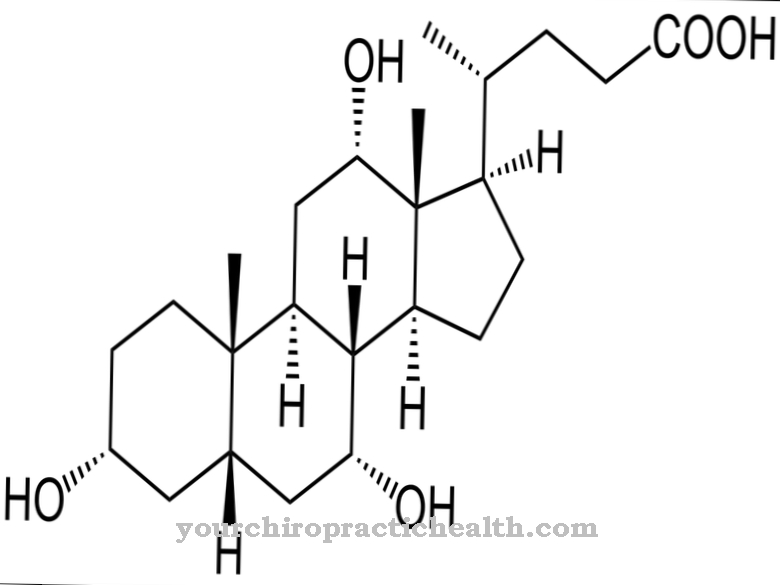NK cells are part of the innate immune system and belong to the group of leukocytes, the white blood cells. Their main task is to recognize infected and degenerate endogenous cells and to attack the cells directly by cytotoxic substances that partially dissolve the membrane of the target cell and initiate their programmed cell death. NK cells recognize "normal" body cells by MHC-I structures that show healthy cells on their surface.
What is the NK cell?
NK cells (natural killer cells) are a special type of white blood cell that patrol the blood and lymph. They are part of the innate immune system and recognize healthy, endogenous cells by special structures, the so-called MHC-I molecules (Major Histocompatibility Complex), which are only completely present in healthy cells.
If cells with incomplete MHC-I molecules are identified, they are most likely infected by intracellular microorganisms or degenerated cells (tumor cells). The NK cell is then activated immediately and attacks the cell recognized as infected or degenerate. They are able to release cytotoxic substances that cause the target cells to partially dissolve their membrane and trigger apoptosis, the programmed cell death, in you.
The counterpart to the NK cells are the T lymphocytes, which are part of the adaptive, adaptive immune system. They each specialize in a certain pathogen, which shows itself through additional structures on the cell surface and is called an antigen.
Anatomy & structure
The NK cells are formed from lymphatic precursor cells that come from the bone marrow. The differentiated NK cells are released into the bloodstream and the lymphatic system, where they immediately begin their patrols.
As a special feature, NK cells have numerous vesicles that contain cytotoxic substances such as perforin to dissolve the membrane of the attacked cell and proteases, which are used for the apoptotic breakdown of the cell and the viral RNA. The apoptosis of the target cell has the advantage that, for example, protein fragments down to individual amino acids are produced that are reintroduced into the metabolism. NK cells are characterized by special receptors on their surface that react with the MHC-I structures of the body's own cells.
These are KIR receptors (killer cell immunoglobulin-like receptors) and so-called natural cytotoxic receptors (NCR). With the KIR receptors, a distinction is made between activating and inhibiting receptors. The NCR are also important for the friend-foe recognition and for the decision on attack or inactivity.
Function & tasks
The main task of NK cells is to identify and combat abnormal cells in the body. Degenerate body cells can be intracellularly infected cells or tumor cells. The NK cells are dependent on their receptor system, which can only check the completeness of their MHC-I structures in the target cells, but not additional structures such as antigens.
Because some viruses use the specific weak point of NK cell recognition in order to withdraw their "host cell" from the killer system, the NK cells work closely with the cytotoxic T cells, which are a highly modern evolutionary part of the adaptive, i.e. the acquired immune system , are. However, the T cells are each only specialized in a single antigen, so that a large number of different specialized T cells are required in order to cover the diverse virus spectrum that is possible for an infection.
NK cells could also be referred to as defense cells of the first line because they can immediately fight against a degenerate cell or a cell infected intracellularly by microorganisms. They can be compared to an armed police force, which not only clarifies but can also intervene directly with armed force if necessary. Because the NK cells are also tricked by certain intracellular pathogens - especially viruses - the support of the cytotoxic T cells makes sense.
In the fight against diseased cells, time can play a major role, for example in order to forestall an exponential increase in viral RNA. The task of the NK cells is therefore to attack the target cell with cytotoxic substances in such a way that the viral RNA is also broken down to prevent it from replicating further.
You can find your medication here
➔ Medicines to strengthen the defense and immune systemDiseases
The dynamic of the immune system is also subject to hormonal influences. Even sympathetic and parasympathetic system controls influence the NK cells and the cytotoxic T cells. Interestingly, when the body is sympathetically attuned to acute stress and thus to maximum physical performance, NK cells are also increased and put on "increased alert".
The cytotoxic T cells are slowed down by acute stress phases, which evidently has been set up by evolution, because rapid immune responses are advantageous during an acute threat with a risk of injury and the corresponding risk of infection. In chronic stress conditions, the situation is different. Chronic stress leads to a weakening of the immune system, NK cells and T cells not only decrease in their number, but also in their alertness. That is why high-performance athletes often show an increased susceptibility to infection shortly before major competitions.
Reduced activity of the NK cells can also result from undesirable side effects from drug exposure (chemotherapy) or radiation, while hereditary malfunctions in NK cells are extremely rare. The role of NK cells in tissue-specific autoimmune diseases such as type 1 diabetes mellitus, multiple sclerosis and Hashimoto or in systemic autoimmune diseases has not yet been sufficiently clarified. It is conceivable that NK cells in combination with T cells have an activating effect on them, so that the T cells carry out the actual attacks on the body's own cells.
On the other hand, NK cells can also recognize activated, auto-reactive T cells as degenerate and kill them directly. This means that NK cells are very likely to be able to initiate, promote and also heal autoimmune diseases.



























